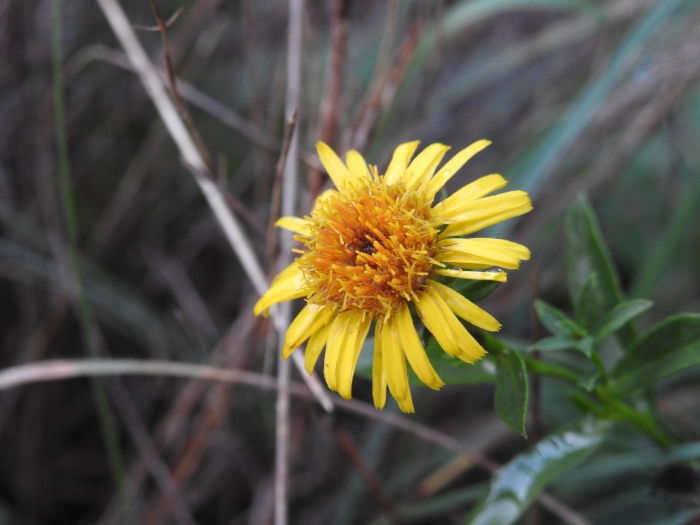Golden Samphire
(Pentanema spiraeifolium)
Golden Samphire (Pentanema spiraeifolium)
/
/

Yves Bas
CC BY 4.0
Image By:
Yves Bas
Recorded By:
Copyright:
CC BY 4.0
Copyright Notice:
Photo by: Yves Bas | License Type: CC BY 4.0 | License URL: http://creativecommons.org/licenses/by/4.0/ | Rights Holder: Yves Bas | Publisher: iNaturalist | Date Created: 2022-11-03T18:32:21-07:00 |





Estimated Native Range
Summary
Pentanema spiraeifolium, commonly known as Golden Samphire, is a perennial herb native to a range of habitats including coastal areas, saline environments, rocky slopes, and open scrublands across Southern and Central Europe to Iran. This includes regions such as southern France, Italy, Switzerland, and the Balkans. It typically grows in well-drained, rocky or sandy soils and can be found at elevations up to 2,300 feet above sea level. The plant reaches heights of 12-31 inches, with oblong-elliptic leaves and erect, branching stems. From June to August, it produces numerous bright yellow and dark orange flowers that are highly attractive to pollinators.
Golden Samphire is valued for its vibrant flowers and its ability to thrive in poor, dry soils, making it a suitable choice for rock gardens, coastal gardens, and wildflower meadows. It requires minimal maintenance once established and is drought-tolerant. In cultivation, it prefers full sun and well-drained soils, and it can tolerate saline conditions, which makes it useful for planting in coastal areas. While not commonly used in culinary or medicinal applications, its ornamental appeal lies in its showy, long-lasting blooms and its resilience in challenging growing conditions.CC BY-SA 4.0
Golden Samphire is valued for its vibrant flowers and its ability to thrive in poor, dry soils, making it a suitable choice for rock gardens, coastal gardens, and wildflower meadows. It requires minimal maintenance once established and is drought-tolerant. In cultivation, it prefers full sun and well-drained soils, and it can tolerate saline conditions, which makes it useful for planting in coastal areas. While not commonly used in culinary or medicinal applications, its ornamental appeal lies in its showy, long-lasting blooms and its resilience in challenging growing conditions.CC BY-SA 4.0
Plant Description
- Plant Type: Herb, Subshrub
- Height: 1-2 feet
- Width: 0.5-1 feet
- Growth Rate: Moderate
- Flower Color: Yellow
- Flowering Season: Summer
- Leaf Retention: Deciduous
Growth Requirements
- Sun: Full Sun
- Water: Medium
- Drainage: Fast
Common Uses
Border Plant, Butterfly Garden, Low Maintenance, Potted Plant
Natural Habitat
Coastal areas, saline environments, rocky slopes, and open scrublands
Other Names
Common Names:
Scientific Names: , Pentanema spiraeifolium, Aster bubonium, Aster pubescens, Aster squarrosus, Erigeron squarrosus, Helenium hispidum, Helenium squarrosum, Inula bubonium, Inula cordata
GBIF Accepted Name: